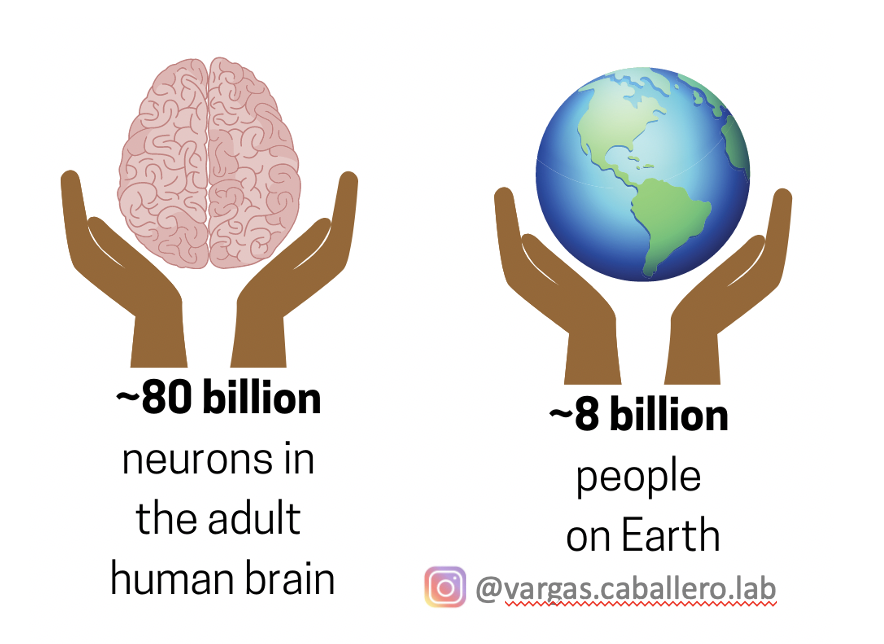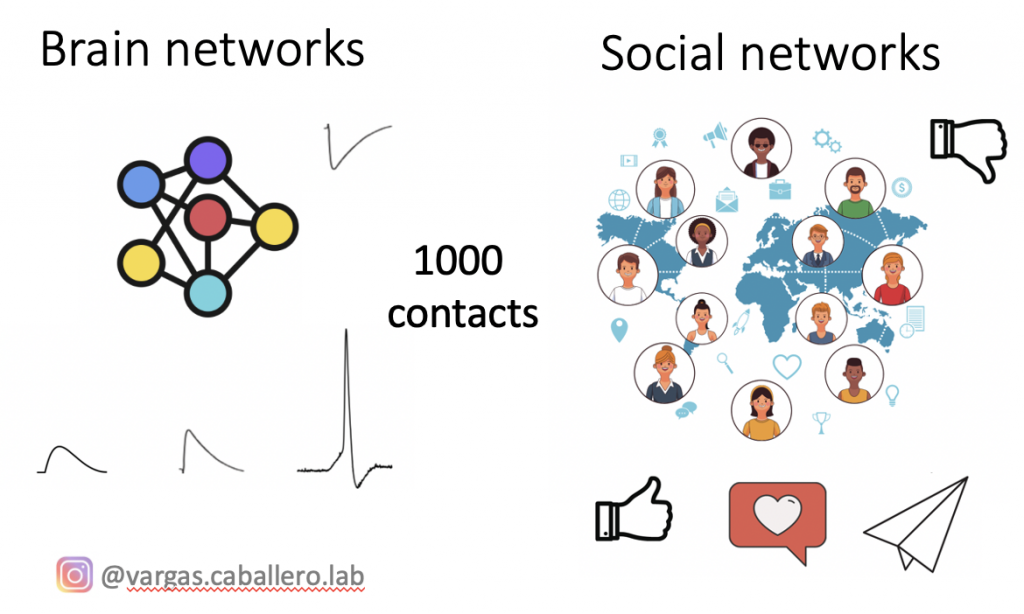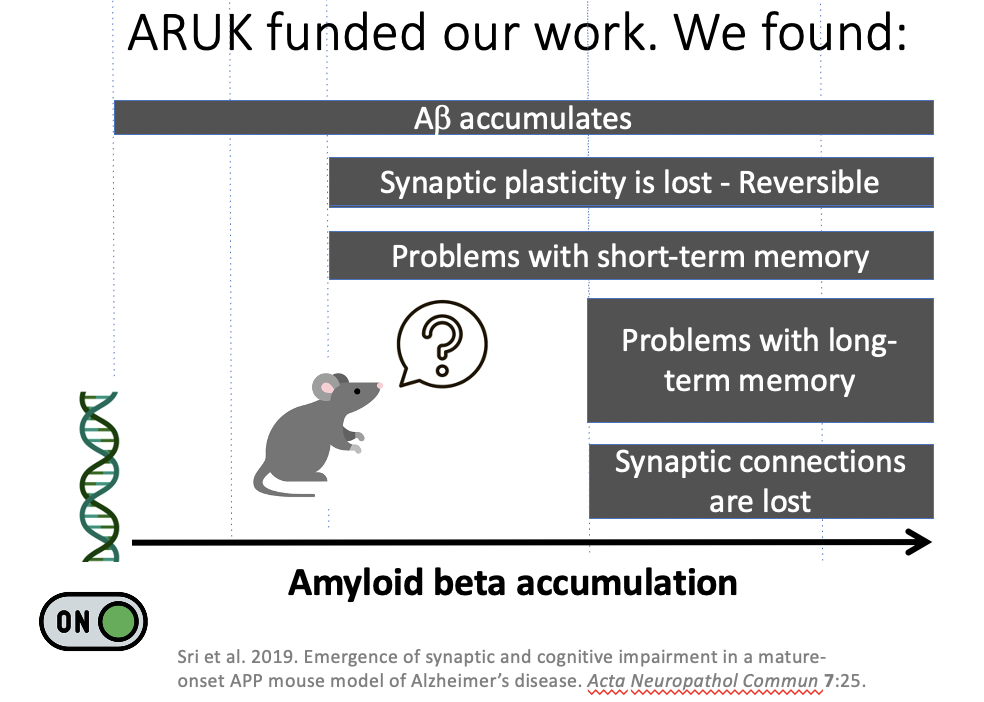Although most people experience some memory problems from time to time (specially as we age), Alzheimer’s disease causes a much steeper decline in memory that would be expected in healthy aging.

In Alzheimer’s disease, brain cells die, and abnormal proteins (amyloid beta and tau) accumulate in the brain. What’s happening in between having a healthy brain and having a brain with Alzheimer’s disease? With support form Alzheimer’s Research UK the University of Southampton my lab has been researching how Alzheimer’s starts in the brain using mice as a disease model.

In the talk for general public, presented here, I discuss how previous research in the human brain shows that neuron contacts (synapses) are lost early in Alzheimer’s disease, specially in the hippocampus (a brain area essential in making new declarative memories), and synapse loss is a strong indicator of cognitive impairment in humans and mouse models of the disease.
I use an analogy of social networks to describe the importance of neuronal communication; whether neurons are activated by information they receive via their contacts is extremely important to allow synaptic plasticity. The focus of our current work to understand the early stages of synapse loss.

We are analysing the emergence of synapse and memory loss using a mouse model of Alzheimer’s disease. Our work has found that synapse dysfunction, seen as a loss of synaptic plasticity, arises very early in the disease process in an Alzheimer’s disease mouse model. And this synaptic dysfunction is reversible early on. Our scientific work has been peer reviewed and published here. We are now researching what’s behind this synapse dysfunction (i.e. we are analysing the mechanisms to clarify what would be the best drug targets). And we continue to work to test how early or late we can intervene to rescue synapses and memory.

